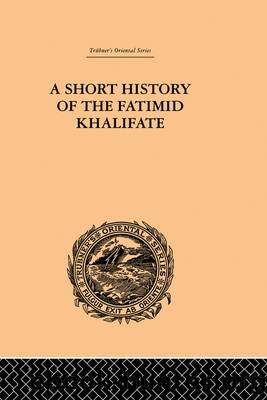A Short History of the Fatimid Khalifate by De Lacy O'Leary

Author:De Lacy O'Leary [O'Leary, De Lacy]
Language: eng
Format: epub
ISBN: 9781297319501
Google: 1CJErgEACAAJ
Publisher: Creative Media Partners, LLC
Published: 2015-02-19T04:49:16+00:00
XI
The Seventh Fatimid Khalif, Az-Zahir
(A.H 411â427 = A.D. 1021, 1035)
ON the âDay of Sacrifice,â 411, seven days after Hakimâs disappearance, his son Abu l-Hasan âAli az-Zahir li-âizazi-dini-llah (âthe triumphant in strengthening Godâs religionâ), then a boy of sixteen years of age, was recognised as Khalif. The heir designated by Hakim, âAbdu r-Rahim, was still in Damascus, but the Princess wrote to him ordering his immediate retum to Egypt. Instead of obeying this summons he declared himself the independent ruler of Damascus, and made himself popular amongst the citizens by repealing the many vexatious regulations which Hakim had put in force. But this popularity did not last long : the soon made himself odious by his avarice and grasping extortions, and craftily utilising this, and the discontent of the soldiers who did not receive the gratuities which they expected, the Princess contrived to gain a party of supporters, and by their help had him arrested and sent in chains to Egypt where he was imprisoned for some four years, then fell ill and died, perhaps poisoned, three days before the Princess herself died.
For the first four years of az-Zahirâs reign the whole power was in the hands of his aunt, the Princess Royal. According to Ibn Khallikan the Princess sent for Yusuf b. Dawwas, the noble who the Syrian writers describe as having conspired with her to arrange the murder of Hakim, and made him a present of a hundred slaves. After the wazir had gone home she sent the eunuch Nesim after these slaves, and conveyed her orders to them that it was their duty to slay Yusuf, as he was the person responsible for the late Khalifâs assassination. In consequence of this Yusuf was put to death. Soon afterwards the Princess contrived the death of two of the wazirs who succeeded him, and throughout the whole four years of her rule she showed herself cruel and vindictive. She died in 416, and the chief control then passed into the hands of a committee of three sheikhs who paid a daily visit to the Khalif, but excluded him from all participation in the administration.
The year of the Princessâ death saw the beginning of a terrible famine in Egypt as the result of a series of bad Niles, and the resultant distress lasted all through 416 and 417. In many cases the starving villages took to brigandage, an evil to which the country is always more or less exposed. Sometimes outbreaks are due, as in this case, to dire distress and consequent recklessness ; sometimes it means the revival of ancient feuds between village and village, or family and family, so that it is no more than an outlet for intermittent intertribal feuds and private quarrels between villages or families ; but in time of distress these become more acrimonious and turn against strangers and travellers. Even the pilgrims on their way through Egypt were attacked. Regulations were passed to prevent the slaughter of cattle for fear that they would be
Download
This site does not store any files on its server. We only index and link to content provided by other sites. Please contact the content providers to delete copyright contents if any and email us, we'll remove relevant links or contents immediately.
A FIGHTING MAN OF MARS by Edgar Rice Burroughs(329)
Prisoners of War in Britain 1756 to 1815 by Francis Abell(287)
Ireland In The New Century by Plunkett Horace Curzon Sir(280)
Arsene Lupin vs. Herlock Sholmes by Maurice Leblanc(280)
Hotwife Rescued--A Wife Sharing Multiple Partner Wife Watching Hotwife Romance Novel by Karly Violet(259)
Complete Works of John Buchan by John Buchan(256)
Lord Palmerston by Anthony Trollope(252)
The Frontiers of Language and Nationality in Europe by Leon Dominian(244)
The Amateur Diplomat by Hugh S. Eayrs & Thomas B. Costain(243)
Boris Karloffâs Favorite Horror Stories by Boris Karloff(239)
BY Anthony Trollope - The life of cicero . vol. 1 by 1881(236)
Scraps by Jane Austen(219)
The Life of Jesus Critically Examined by Dr. David Friedrich Strauss by George Eliot--Delphi Classics (Illustrated) by George Eliot(214)
Delphi Works of Sir Arthur Conan Doyle (Illustrated) by Sir Arthur Conan Doyle(201)
Siegfried and The Twilight of the Gods: The Ring of the Niblung II by Wagner Richard;(193)
Mr. Surprise Daddy: An Accidental Pregnancy Romance (Love, Accidentally) by Annabelle Love(184)
The Thousand and One Days by Miss (Julia) Pardoe(161)
A Journey through Persia, Armenia, and Asia Minor, to Constantinople, in the Years 1808 and 1809 by James Justinian Morier(160)
The First Book of Farming by C. L. (Charles Landon) Goodrich(158)
